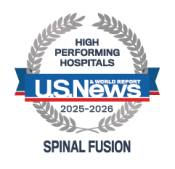Adult Scoliosis Treatment
Scoliosis is an unnatural side-to-side S- or C-shaped curving of the spine. Scoliosis in children most often affects girls during growth spurts in their early teens. Adults may have either degenerative scoliosis or the cause is unknown (idiopathic.)
Adult Idiopathic Scoliosis
Scoliosis that develops with no known cause is the most common type. When idiopathic scoliosis begins in adolescence and continues into adulthood with increasing symptoms, it’s called adult idiopathic scoliosis.
Idiopathic scoliosis affects the upper (thoracic) or lower (lumbar) spine. Discs and joints can degenerate, which may result in spinal stenosis. Scoliosis can also cause arthritis in the spinal joints, resulting in bone spurs.
Scoliosis Symptoms
In adults, scoliosis symptoms can cause a gradual loss of function. They include:
- Low back pain and stiffness
- Numbness, cramping, and shooting pain in the legs from pinched nerves
- Fatigue from the strain on the lower back and leg muscles
- One shoulder or hip may be higher than the other
- One arm may hang lower than the other
- A rib hump occurs in the lower back
Degenerative Scoliosis
Degenerative scoliosis usually begins after age 40, when the age and a deteriorating spine combine and scoliosis develops. Other factors include facet joint arthritis and collapse of the disc spaces. Degenerative scoliosis is often related to osteoporosis, especially in women, as the changes combine and the spine slowly sags into a curve.
Degenerative Scoliosis Symptoms
Degenerative scoliosis usually affects the lumbar, or lower, spine. Symptoms include back pain, numbness and shooting pain down the legs.
Diagnosis for Scoliosis
Spine specialists at University of Maryland Orthopaedics evaluate your condition using an X-ray of your entire spine. If you have leg pain or nerve problems, you may also have an MRI (magnetic resonance imaging).
Nonsurgical treatments are effective for most adults with either idiopathic or degenerative scoliosis. These include periodic observation and:
- Nonsteroidal anti-inflammatory drugs (NSAIDs) such as aspirin, ibuprofen and naproxen can reduce swelling and relieve pain.
- Exercises to strengthen the core abdomen and back muscles.
- Epidurals or nerve block injections can provide temporary relief of leg pain and other symptoms.
- Temporary braces offer short-term pain relief.
When Scoliosis Surgery Can Help
If nonsurgical treatments provide no relief and you have a spinal imbalance with disabling back or leg pain, scoliosis surgery may be an option:
- Laminectomy, also called decompression surgery, removes some or all of the lamina part of the vertebra to relieve pressure on the spinal cord
- Microdiscectomy (microdecompression), a minimally invasive surgery to relieve pressure on the nerves
- Spinal fusion permanently joins two vertebras with bone or synthetic graft material
- Osteotomy realigns spinal segments
- Vertebral column resection realigns the spine when an osteotomy or other surgeries don’t correct the scoliosis
Recovery depends on your condition and type of surgery, though it can take up to a year to fully recover. You should not lift heavy objects and minimize bending for the first 6—12 weeks.
Make an Appointment
To make an appointment with a spine specialist, call 410-448-6400.

